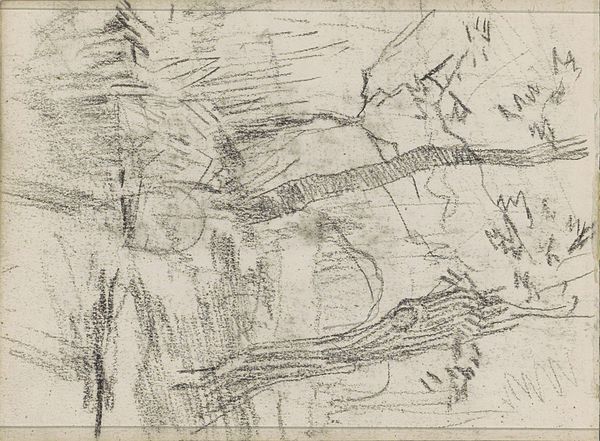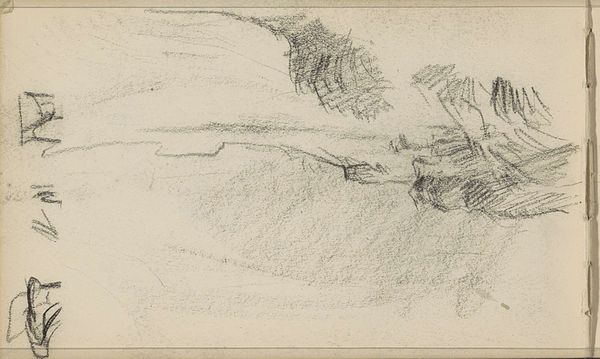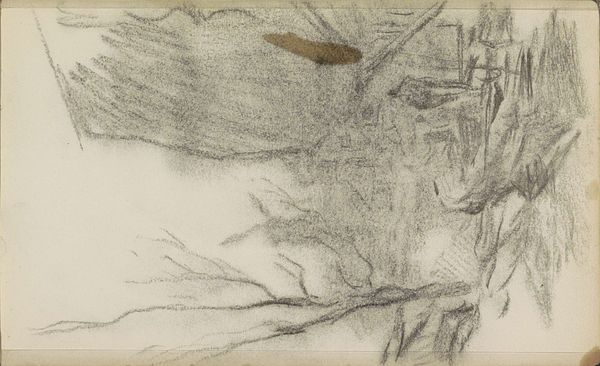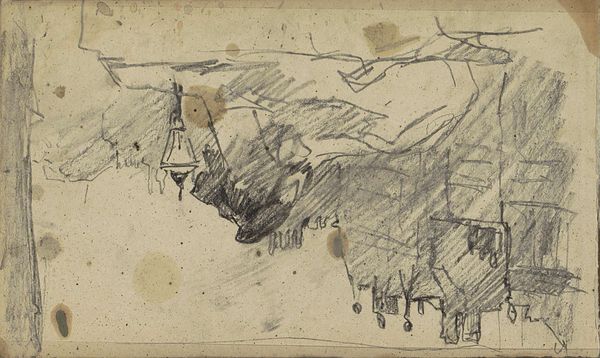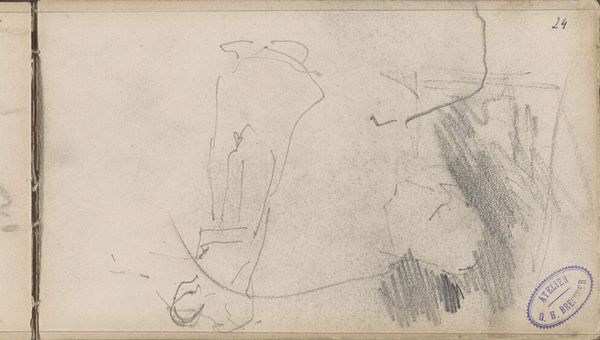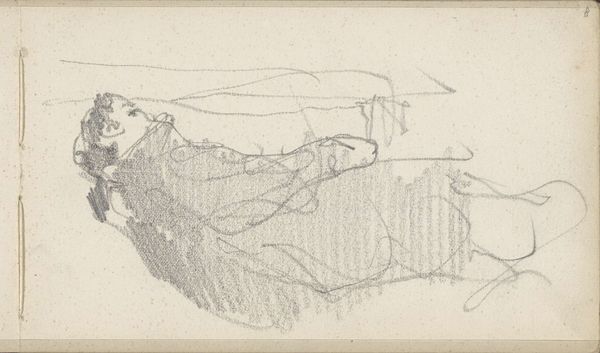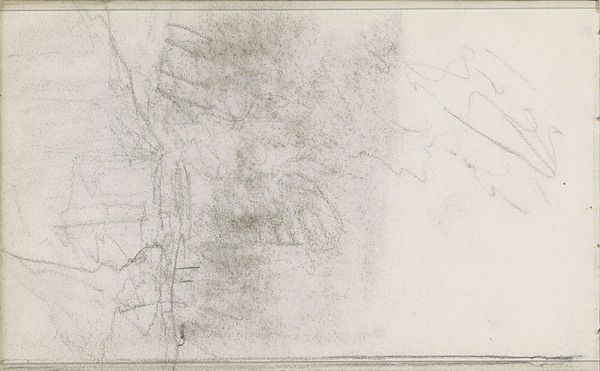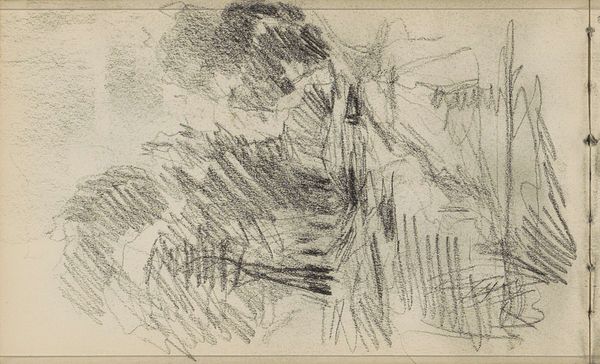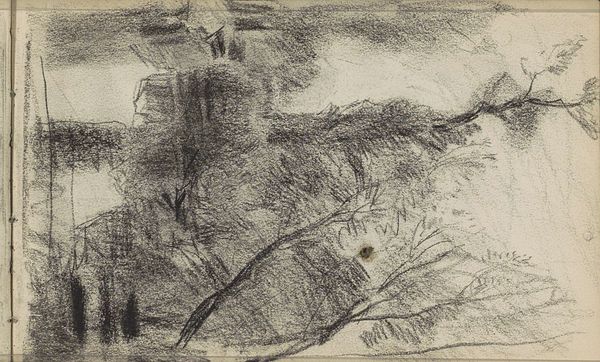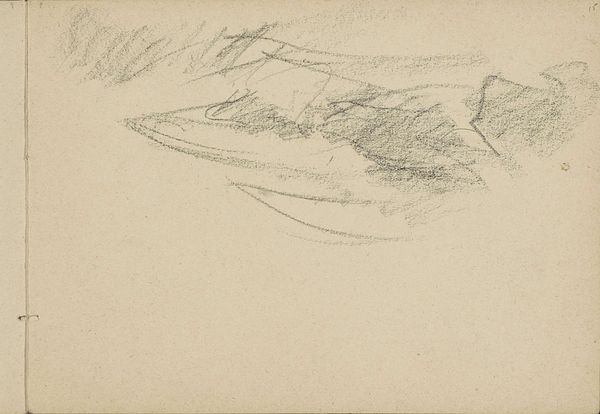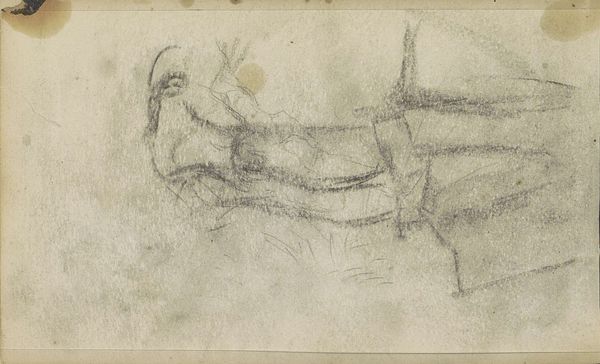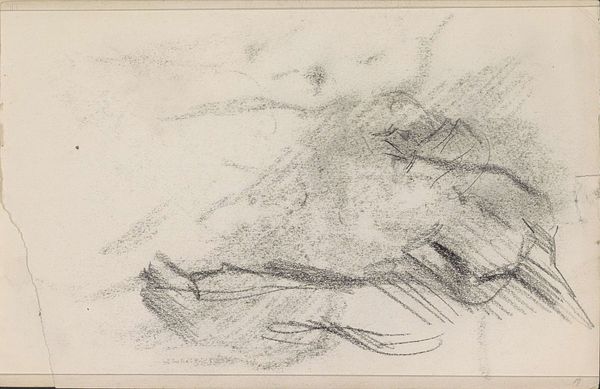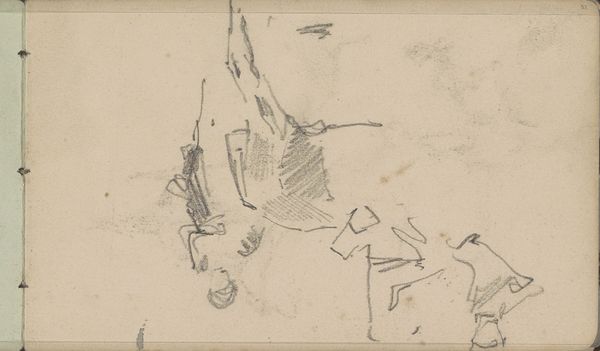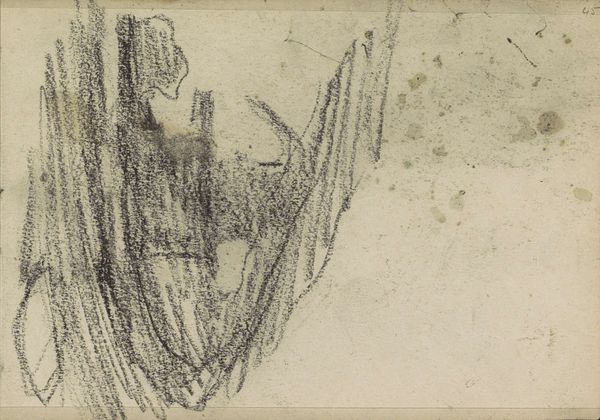
Copyright: Rijks Museum: Open Domain
Editor: So, this is Johan Antonie de Jonge’s "Studie, mogelijk van een gebouw in een landschap," created in 1909, a pencil drawing on paper. It's quite rough, almost dreamlike in its simplicity. What catches your eye? Curator: I see a fascinating tension between representation and abstraction, deeply embedded in the context of early 20th-century art institutions. Drawings like these existed often as preparation for paintings or as studies but how the works are valued depends so much on exhibition. This one evokes questions: was it ever exhibited? How might its meaning change if we consider its public display? The loose strokes hint at a certain modernity in the early 20th century and it appears to adopt the visual language of impressionism to emphasize subjectivity. How do you think its context shapes our understanding? Editor: I guess without that framing, it would just be a simple sketch! The fact that it was made and is now presented in this gallery setting changes its value and meaning. If it was not displayed at all it would probably not have survived till this day, which means society found it worthy to save, but do you think we risk over-interpreting a possibly casual drawing? Curator: That is a risk but by acknowledging the societal mechanisms at play, like the art market's selective canonization of "important" artists, we can avoid reinforcing these power structures and it encourages a richer and broader interpretation. Can we consider that maybe the artist's intent included such display and discourse? Editor: Maybe! I never thought about how the physical and social context impacts how we perceive a sketch like this. Thanks for sharing your expertise on this matter. Curator: My pleasure; it has been a great exercise.
Comments
No comments
Be the first to comment and join the conversation on the ultimate creative platform.
